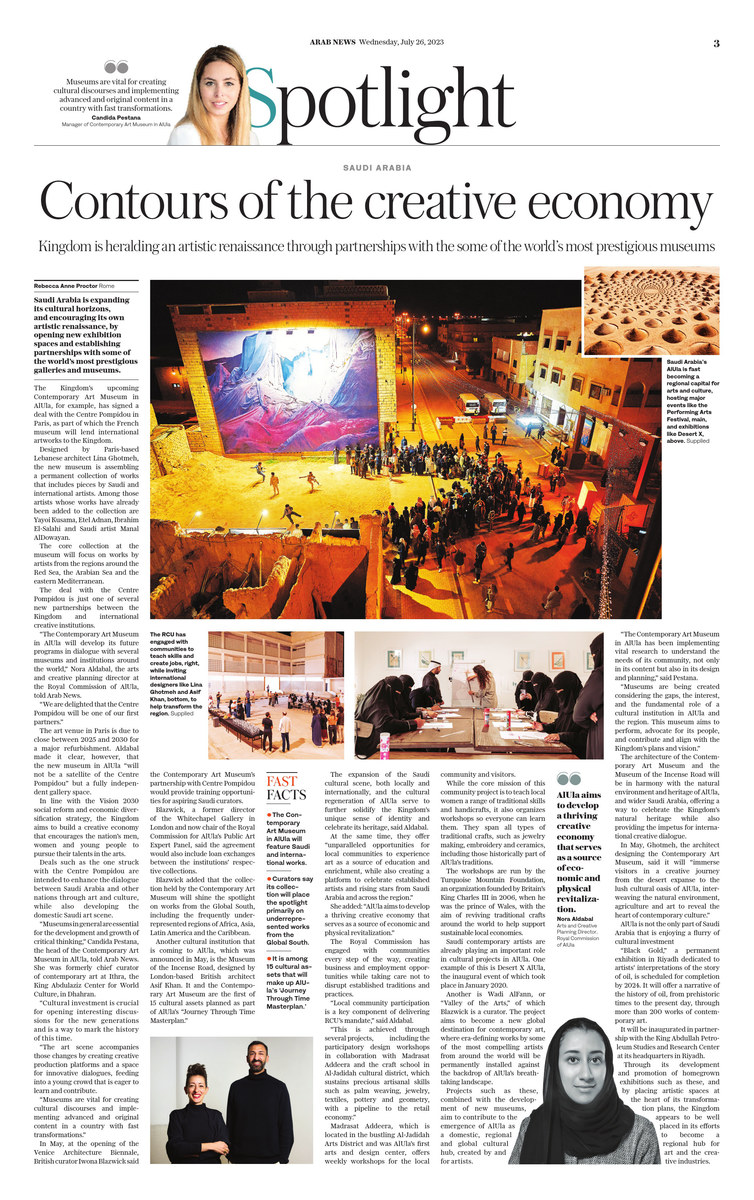ROME: Saudi Arabia is expanding its cultural horizons, and encouraging its own artistic renaissance, by opening new exhibition spaces and establishing partnerships with some of the world’s most prestigious galleries and museums.
The Kingdom’s upcoming contemporary art museum in AlUla, for example, has signed a deal with the Centre Pompidou in Paris, as part of which the French museum will lend international artworks to the Kingdom.
Designed by Paris-based Lebanese architect Lina Ghotmeh, the new museum is assembling a permanent collection of works that includes pieces by Saudi and international artists.
Among those artists whose works have already been added to the collection are Yayoi Kusama, Etel Adnan, Ibrahim El-Salahi and Saudi artist Manal AlDowayan.
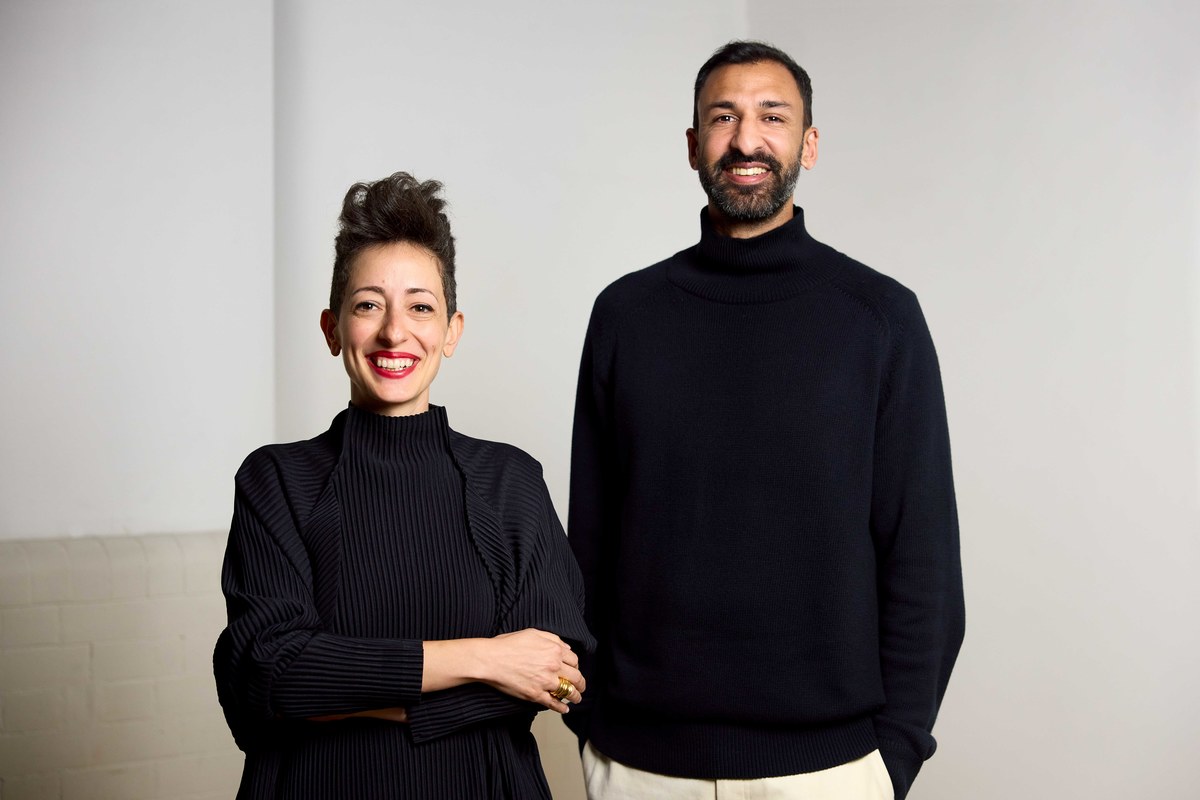
Lina Ghotmeh and Asif Khan. (Luke Walker)
The core collection at the museum will focus on works by artists from the regions around the Red Sea, the Arabian Sea and the Eastern Mediterranean.
The deal with the Centre Pompidou is just one of several new partnerships between the Kingdom and international creative institutions.
“The contemporary art museum in AlUla will develop its future programs in dialogue with several museums and institutions around the world,” Nora Aldabal, executive director of Arts Alula, Royal Commission for AlUla, told Arab News.
“We are delighted that the Centre Pompidou will be one of our first partners.”
The art venue in Paris is due to close between 2025 and 2030 for a major refurbishment. Aldabal made it clear, however, that the new museum in AlUla “will not be a satellite of the Centre Pompidou” but a fully independent gallery space.
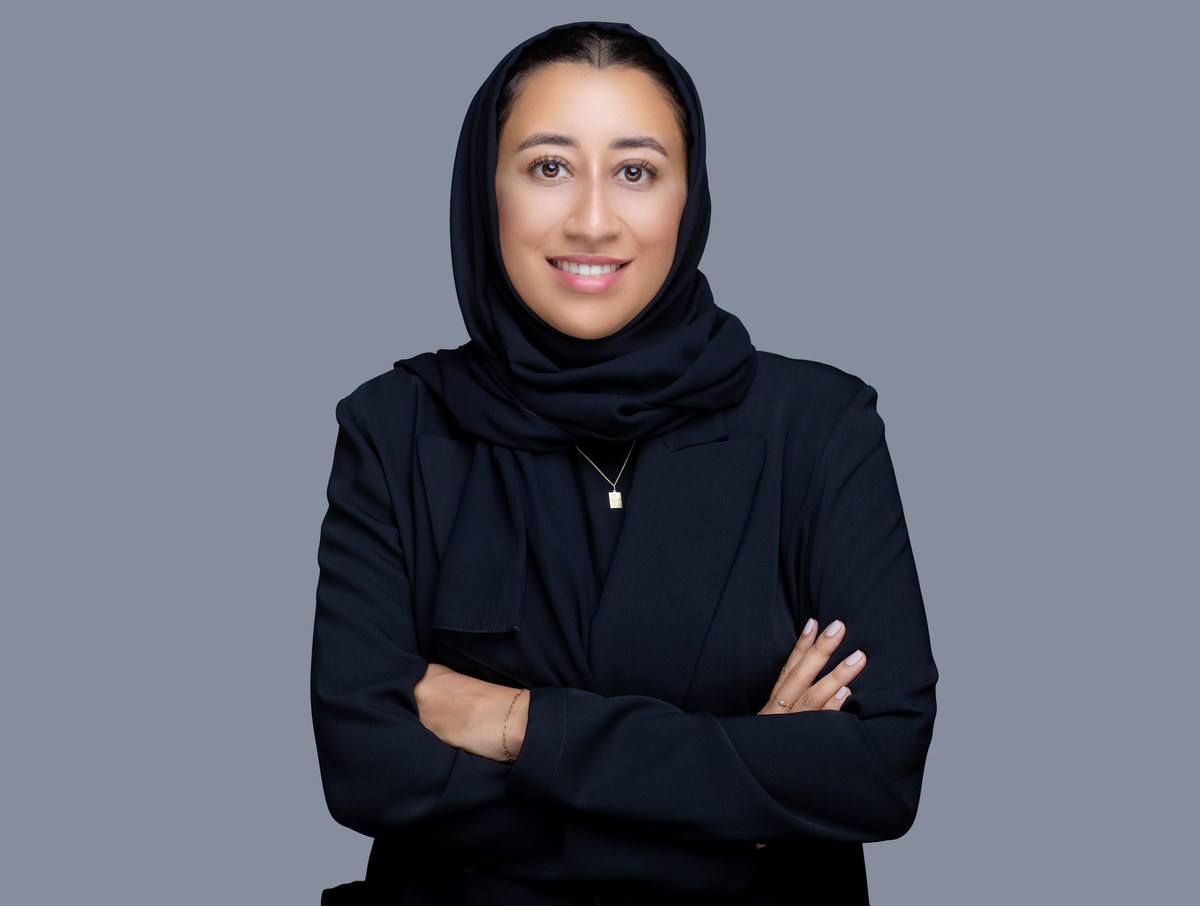
Nora Aldabal, executive director of Arts AlUla, Royal Commission for AlUla. (Supplied)
In line with the Vision 2030 social reform and economic diversification strategy, the Kingdom aims to build a creative economy that encourages the nation’s men, women and young people to pursue their talents in the arts.
Deals such as the one struck with the Centre Pompidou are intended to enhance the dialogue between Saudi Arabia and other nations through art and culture, while also developing the domestic Saudi art scene.
“Museums in general are essential for the development and growth of critical thinking,” Candida Pestana, contemporary art museum manager, told Arab News. She was formerly chief curator of contemporary art at Ithra, the King Abdulaziz Center for World Culture, in Dhahran.
“Cultural investment is crucial for opening interesting discussions for the new generations and is a way to mark the history of this time.
“The art scene accompanies those changes by creating creative production platforms and a space for innovative dialogues, feeding into a young crowd that is eager to learn and contribute.
“Museums are vital for creating cultural discourses and implementing advanced and original content in a country with fast transformations.”

Candida Pestana, manager of contemporary art museum in AlUla. (Supplied)
In May, at the opening of the Venice Architecture Biennale, Iwona Blazwick OBE, curatorial lead for contemporary art museum, Royal Commission for AlUla, said the museum’s partnership with Centre Pompidou would provide training opportunities for aspiring Saudi curators.
Blazwick, a former director of the Whitechapel Gallery in London and now chair of the Royal Commission for AlUla’s Public Art Expert Panel, said the agreement would also include loan exchanges between the institutions’ respective collections.
Blazwick added that the collection held by the contemporary art museum will shine the spotlight on works from the Global South, including the frequently underrepresented regions of Africa, Asia, Latin America and the Caribbean.
Another cultural institution that is coming to AlUla, which was announced in May, is the Museum of the Incense Road, designed by London-based British architect Asif Khan. It and the contemporary art museum are the first of 15 cultural assets planned as part of AlUla’s “Journey Through Time Masterplan.”
FASTFACTS
- The contemporary art museum in AlUla will feature Saudi and international works.
- Curators say its collection will place the spotlight primarily on underrepresented works from the Global South.
- It is among 15 cultural assets that will make up AlUla’s “Journey Through Time Masterplan.”
The expansion of the Saudi cultural scene, both locally and internationally, and the cultural regeneration of AlUla serve to further solidify the Kingdom’s unique sense of identity and celebrate its heritage, said Aldabal.
At the same time, they offer “unparalleled opportunities for local communities to experience art as a source of education and enrichment, while also creating a platform to celebrate established artists and rising stars from Saudi Arabia and across the region.”
She added: “AlUla aims to develop a thriving creative economy that serves as a source of economic and physical revitalization.”
None of this is being imposed on the local population of AlUla against its will. The Royal Commission has engaged with communities every step of the way, creating business and employment opportunities while taking care not to disrupt established traditions and practices.
“Local community participation is a key component of delivering RCU’s mandate,” said Aldabal.
“This is achieved through several projects, including the participatory design workshops in collaboration with Madrasat Addeera and the craft school in Al-Jadidah cultural district, which sustains precious artisanal skills such as palm weaving, jewelry, textiles, pottery and geometry, with a pipeline to the retail economy.”
Madrasat Addeera, which is located in the bustling Al-Jadidah Arts District and was AlUla’s first arts and design center, offers weekly workshops for the local community and visitors.
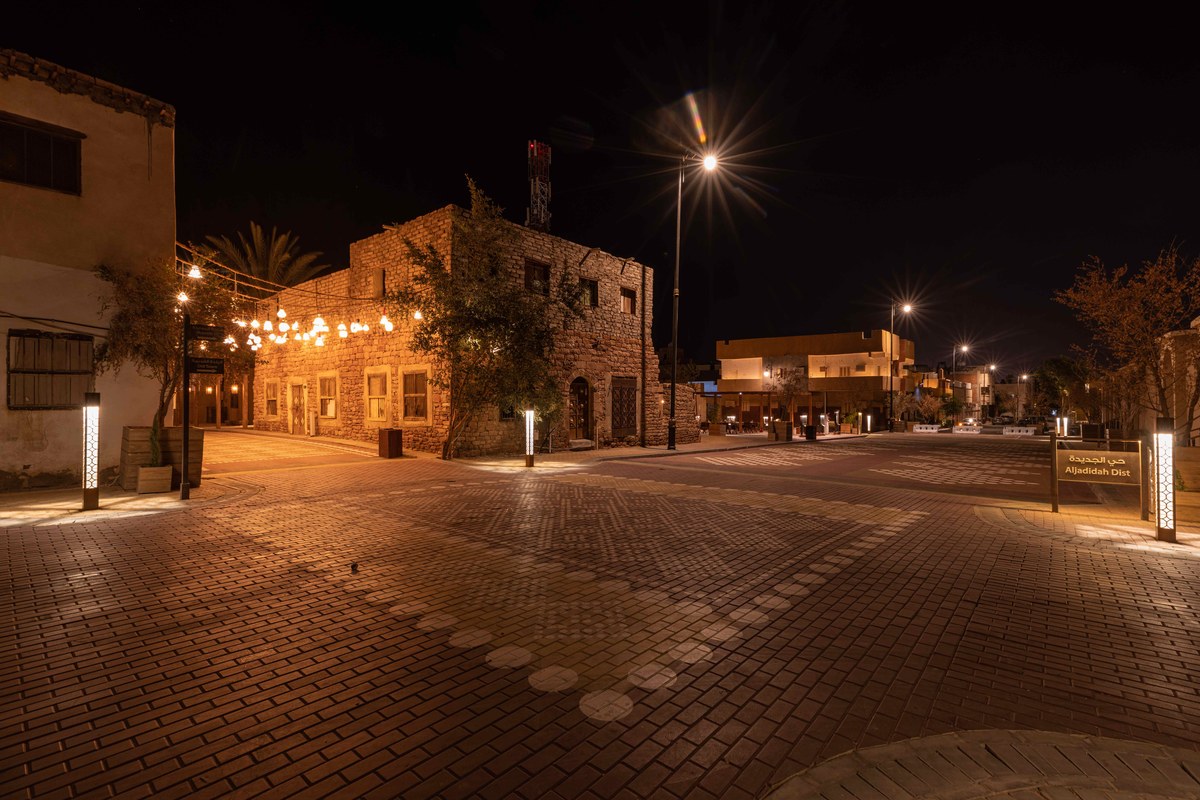
Al-Jadidah Arts District. (Royal Commission for AlUla)
While the core mission of this community project is to teach local women a range of traditional skills and handicrafts, it also organizes workshops so everyone can learn them. They span all types of traditional crafts, such as jewelry making, embroidery and ceramics, including those historically part of AlUla’s traditions.
The workshops are run by the Turquoise Mountain Foundation, an organization founded by Britain’s King Charles III in 2006, when he was the prince of Wales, with the aim of reviving traditional crafts around the world to help support sustainable local economies.
The goal is for AlUla to become “a place created by and for artists,” as highlighted by the mandate of the Royal Commission, said Aldabal.

Design Geometry of the Stars workshop in 2022. (Supplied)
Ongoing exhibitions and projects with the direct involvement of artists include an annual artist’s residency program, founded in 2021, that has already welcomed 26 multidisciplinary artists.
They include Saudi artists Muhannad Shono, Rashed Al-Shashai and Ayman Zedani, the Saudi architectural collective Bricklab, along with works by international artists such as Monira Al-Qadiri, a Kuwaiti citizen based in Berlin, and Ben Elliot from France, among others.
“They pursue their artistic endeavors through experimentation in the unique and rich setting of AlUla,” said Aldabal.
Saudi contemporary artists are already playing an important role in cultural projects in AlUla. One example of this is Desert X AlUla, the inaugural event of which took place in January 2020.
Another is Wadi AlFann, or “Valley of the Arts,” of which Blazwick is a curator. The project aims to become a new global destination for contemporary art, where era-defining works by some of the most compelling artists from around the world will be permanently installed against the backdrop of AlUla’s breathtaking landscape. The Saudi artists involved in the project include Ahmed Mater and AlDowayan.
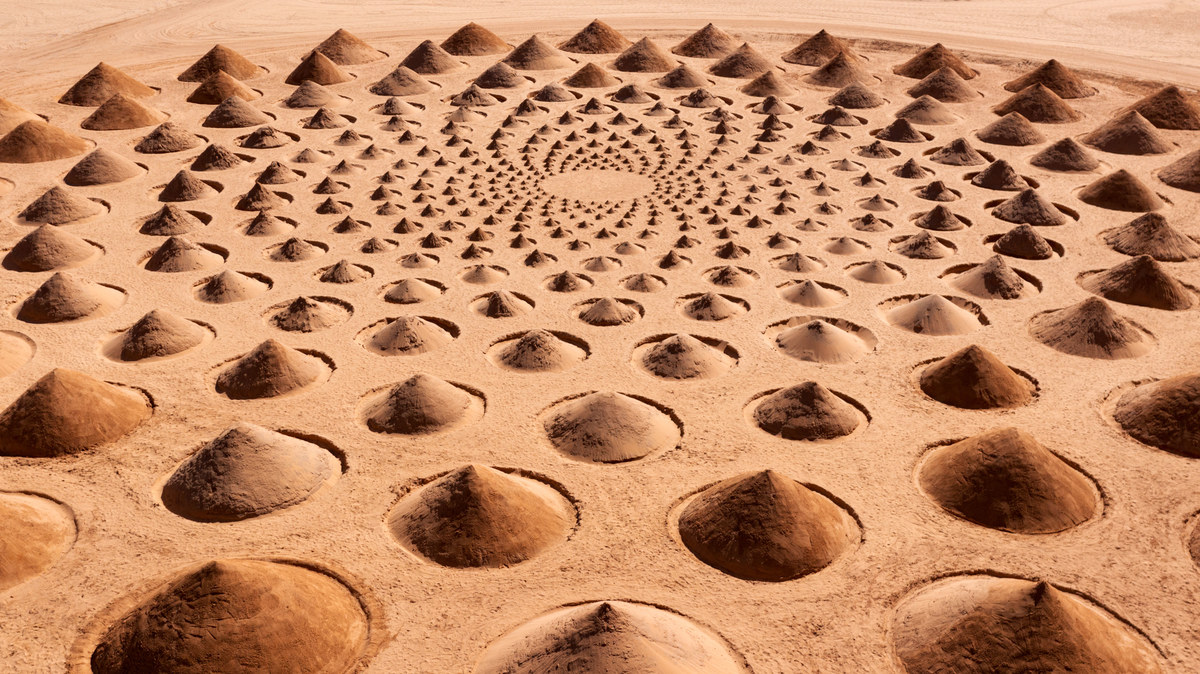
Jim Denevan’s Angle of Repose at Desert X AlUla 2022. (Supplied)
New works being created specially for Wadi AlFann include AlDowayan’s labyrinthine installation “Oasis of Stories,” which is inspired by the mud walls of AlUla’s Old Town. The walls of her artwork will be inscribed with personal histories and folklore she gathered from communities in AlUla.
Mater said his new work, “Ashab Al-Lal,” will explore the mythic space between subjective imagination and objective reality by generating a mirage among the sand dunes.
Projects such as these, combined with the development of new museums, aim to contribute to the emergence of AlUla as a domestic, regional and global cultural hub, created by and for artists.
“The contemporary art museum in AlUla has been implementing vital research to understand the needs of its community, not only in its content but also in its design and planning,” said Pestana.
“Museums are being created considering the gaps, the interest, and the fundamental role of a cultural institution in AlUla and the region. This museum aims to perform, advocate for its people, and contribute and align with the Kingdom’s plans and vision.”
The architecture of the contemporary art museum and the Museum of the Incense Road will be in harmony with the natural environment and heritage of AlUla, and wider Saudi Arabia, offering a way to celebrate the Kingdom’s natural heritage while also providing the impetus for international creative dialogue.

AlUla Oasis landscape. (Royal Commission for AlUla)
In May, Ghotmeh, the architect designing the contemporary art museum, said it will “immerse visitors in a creative journey from the desert expanse to the lush cultural oasis of AlUla, interweaving the natural environment, agriculture and art to reveal the heart of contemporary culture.”
It will achieve this through a series of garden pavilions that present a constant interplay between art and nature designed to capture “the essence of this unique place,” she added.
AlUla is not the only part of Saudi Arabia that is enjoying a flurry of cultural investment. The Red Sea Museum in Jeddah, for example, is due to open soon.
“Black Gold,” a permanent exhibition in Riyadh dedicated to artists’ interpretations of the story of oil, is scheduled for completion by 2024. It will offer a narrative of the history of oil, from prehistoric times to the present day, through more than 200 works of contemporary art.
It will be inaugurated in partnership with the King Abdullah Petroleum Studies and Research Center at its headquarters in Riyadh.
Through its development and promotion of homegrown exhibitions such as these, and by placing artistic spaces at the heart of its transformation plans, the Kingdom appears to be well placed in its efforts to become a regional hub for art and the creative industries.
